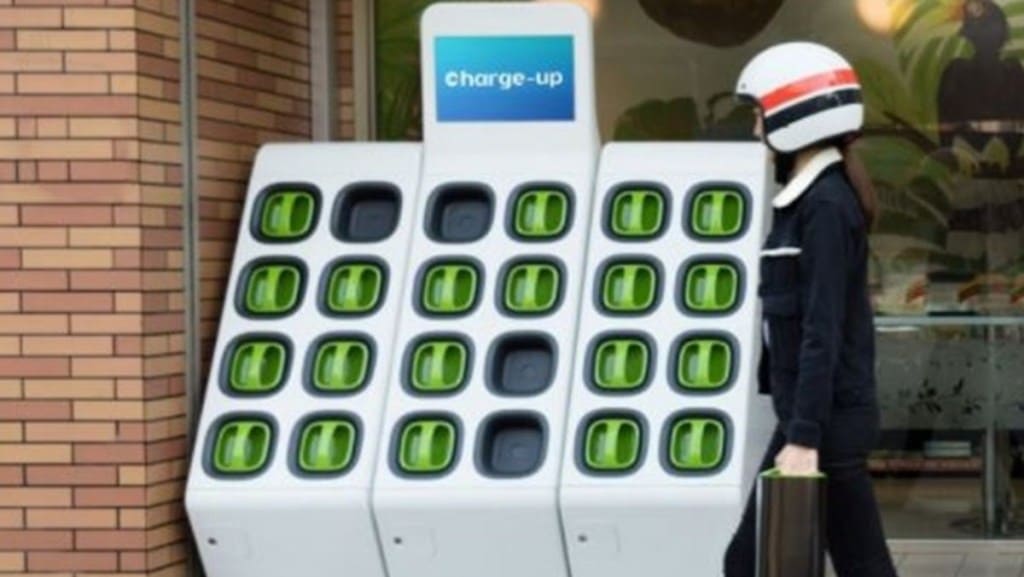Puneet Goel
Priorities of the Indian government have come through clearly with the first draft of their new battery swapping technology, indicating how keen they are to have India spearheading the EV race across the world. The policy suggests technologically-intensive solutions to some of the persisting issues faced by all stakeholders participating in the EV industry.
The policy will likely see several businesses and markets rise up across the country to cash in on the opportunities that develop. To understand more, India needs to look towards countries like China to learn the ropes of building a robust ecosystem in order for all stakeholders to profit in the EV revolution.
With the advantages that Battery as a Service (BaaS), Battery Swapping Stations (BSS) & Battery Charging Stations (BCS) offer, EVs can be looked at as being instrumental in various industries as batteries will gradually start becoming accessible, affordable, cost-efficient and time-efficient. For e.g., with the E-commerce boom in India, EVs can be strategically advantageous for delivery partners who are looking for range and affordable prices.
Other optimizations like battery size reduction as well as advances in swapping technologies will increase usable range. Building and laying down infrastructure that allows batteries to be interoperable will further increase flexibility options of purchasing EVs without having to worry about which battery works for which model/car/vehicle.
India needs to build unshakeable and extensive infrastructure across the country for battery swapping. Petrol pumps, government offices, residential and commercial societies, e-commerce centres and mall compounds can all have battery swapping stations for easy access to consumers.
This will encourage more and more consumers to adopt EVs for long distance travel too and make the shift from ICE vehicles smooth and swift. The shift from the prevailing ICE based transport systems to the renewables based EV industry will only materialise if this huge undertaking is actioned upon not only by the government but also by manufacturers.
Several factors from other countries need to be studied in depth, to remove existing hindrances that are or could act as hurdles to developing successful battery swapping technologies in India. India stands a chance to gain a huge amount of insight while transitioning, if this process is carried out thoroughly.
India’s battery swapping technology is currently at a nascent stage with developments only in the two-wheeler sector whereas China has made competitive strides in the area.
For developing a globally competitive auto industry with advanced New Energy Vehicle (NEV) technology, China has already laid down the roadmap in their New Vehicle Industrial Development Plan 2021-2035. Along with this, China has also been focussing on building battery swapping networks and added infrastructure across their country to provide itself a competitive edge over the world.
If India were to follow suit with the building of 800 battery swapping stations across the country, providing consumers with swappable and chargeable power batteries, this technology would similarly generate employment opportunities for millions in India.
The government and private investors need to join hands in creating business opportunities for small entrepreneurs in India to facilitate establishing new battery swapping networks by providing incentives and subsidies.
A key learning from the Chinese deployment of infrastructure is their lack of focus on the standardisation of their battery swapping networks. The impact this has had on interoperability is clearly measurable and India stands to learn from this and build uniformity into the system before it scales up.
Different two-wheeler and three-wheeler brands in China are relying on different battery technologies that are not unified at present. And this standardisation and interoperability is expected to be the game changer in the global EV race.
Even though setting up a standardization of networks poses a significant challenge, the beneficial position that India finds itself in is that Japanese companies are keen on investing in the Indian market.
This opens access to many new technologies that burgeoning Indian EV start-ups can gain from. Through strategic partnerships and avenues like QUAD, this handshake of countries to exchange technologies, markets and subject matter expertise can be fast tracked to build the necessary infrastructure, standardisation protocol and networks that will propel India at the forefront of the global EV transition. All Indian stakeholders need to work together in making this future a reality.
The author is CEO and founder – eRise.
Disclaimer: The views and opinions expressed in this article are solely those of the original author. These views and opinions do not represent those of The Indian Express Group or its employees.



















